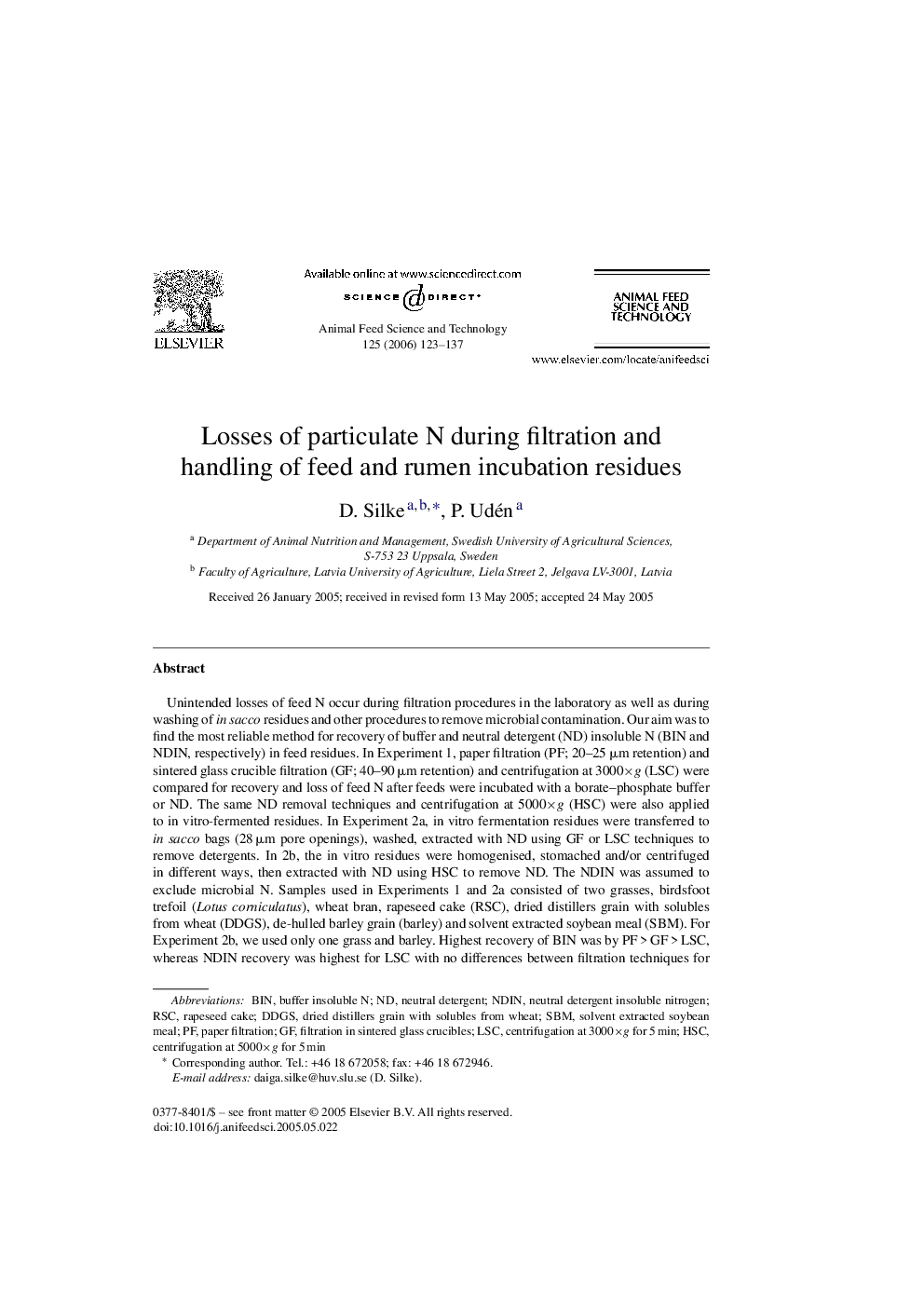| کد مقاله | کد نشریه | سال انتشار | مقاله انگلیسی | نسخه تمام متن |
|---|---|---|---|---|
| 2421298 | 1552505 | 2006 | 15 صفحه PDF | دانلود رایگان |

Unintended losses of feed N occur during filtration procedures in the laboratory as well as during washing of in sacco residues and other procedures to remove microbial contamination. Our aim was to find the most reliable method for recovery of buffer and neutral detergent (ND) insoluble N (BIN and NDIN, respectively) in feed residues. In Experiment 1, paper filtration (PF; 20–25 μm retention) and sintered glass crucible filtration (GF; 40–90 μm retention) and centrifugation at 3000×g (LSC) were compared for recovery and loss of feed N after feeds were incubated with a borate–phosphate buffer or ND. The same ND removal techniques and centrifugation at 5000×g (HSC) were also applied to in vitro-fermented residues. In Experiment 2a, in vitro fermentation residues were transferred to in sacco bags (28 μm pore openings), washed, extracted with ND using GF or LSC techniques to remove detergents. In 2b, the in vitro residues were homogenised, stomached and/or centrifuged in different ways, then extracted with ND using HSC to remove ND. The NDIN was assumed to exclude microbial N. Samples used in Experiments 1 and 2a consisted of two grasses, birdsfoot trefoil (Lotus corniculatus), wheat bran, rapeseed cake (RSC), dried distillers grain with solubles from wheat (DDGS), de-hulled barley grain (barley) and solvent extracted soybean meal (SBM). For Experiment 2b, we used only one grass and barley. Highest recovery of BIN was by PF > GF > LSC, whereas NDIN recovery was highest for LSC with no differences between filtration techniques for most feeds. After in vitro fermentation, recovery of NDIN was 1.2–7.1- and 1.2–2.8-fold higher by LSC versus GF and PF, respectively. Washing of in vitro residues in sacco caused NDIN reductions of up to 0.35 and 0.85 when GF or LSC was used to remove ND. Losses of NDIN from in vitro fermented feeds, including in sacco and GF losses after ND extraction, were 0.64–0.70 in forage, and 0.81 and 0.83 in SBM and DDGS, respectively. Losses of NDIN from homogenisation, pummelling and centrifugation of in vitro residue were smaller (0.02–0.42) than after sample washing in sacco bags. Oven drying of in vitro residues at 65 °C prior to ND extraction inflated NDIN values and must be avoided. A higher centrifugal force, i.e., 5000×g instead of 3000×g and fewer centrifugations (three instead of five) resulted in the highest recovery and are recommended to minimise sample losses during centrifugation of in vitro residues.
Journal: Animal Feed Science and Technology - Volume 125, Issues 1–2, 6 January 2006, Pages 123–137